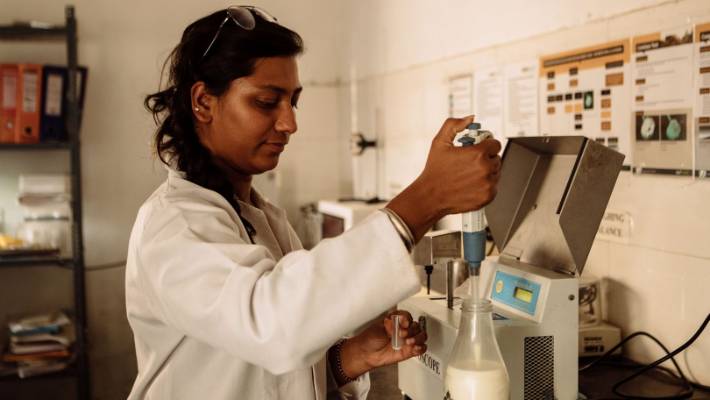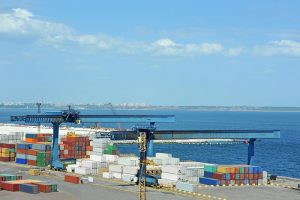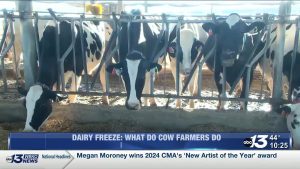But after retiring from the sport in 2001, his travels to India always stayed with him and about nine years ago, Allott started Quality NZ, a meat, seafood and wine exporting business to fill the gap he found in India’s food market.
“When I was in India as a cricketer, staying in amazing hotels, what became quite obvious was the lack of New Zealand products,” Allott said.
Allott said setting up in India was easier than he thought due to the shared history between the two countries, from fighting side by side at Gallipoli, to Sir Edmund Hillary conquering Mt Everest and the shared passion for cricket.
Allott spent 18 months researching the Indian market and several years living in the country in the beginning to set up the supply chain.
New Zealand High Commissioner to India Joanna Kempkers said the country was facing a turning point, with its economy expected to overtake China as its Government was becoming more open to building international trade.
“India is also expected to have the largest population in the world. That has huge opportunities for New Zealand businesses and there is interest there,” Kempkers said.
“The last 20 years have been about China, the next 20 years will be India for NZ business.”
But with 1.34 billion people, 22 major languages, 720 dialects, six major religions, it would be naive to call it an easy market, Kempkers said.
Allott said the business had to treat India like a “bunch of micro-countries”.
“Each of our 25 cities are almost as different countries because of the diversity between states,” Allott said.
Despite facing high tariffs and no bilateral free trade agreement, other New Zealand companies have also started tackling India’s enormous market.
Fonterra launched a range of products in India under its Dreamery brand through a joint venture with Indian retail giant Future Group in June last year.
The joint venture called Fonterra Future was Fonterra’s second go at the Indian market.
The dairy cooperative first attempt at the Indian market in 2001 with Britannia International fell through in 2009.
Fonterra India and Sri Lanka markets managing director Sunil Sethi said this was because the cooperative’s approach was ahead of its time.
“The value added products had not really taken off. Given the changes in consumer behaviour, the improvement changes in the logistics and supply chain the timing is just right.
The Dreamery range is marketed as being a high quality product targeted to the country’s growing middle-class urban population.
Seventy per cent of India’s population is below 45 years old.
They live in urban areas, lead active lifestyles, have greater disposable income, are better travelled than previous generations, and want to consume higher quality and higher nutritional dairy products, Sethi said.
New Zealand Trade and Enterprise regional director for India, Middle East and Africa, Tony Martin, said because India had been difficult to crack especially for food and beverages, Fonterra’s re-entry had been a “massive win” for New Zealand.
“The modern retail trade has mushroomed over the last few years. Now you’ve got all these top-end supermarkets and retail outlets that didn’t exist 20 years ago,” Martin said.
Fonterra’s presence in India could help improve Indian consumers’ understanding about New Zealand products, he said.
In October Fonterra also launched its Anchor brand through Future Group.
Future Group sells Anchor whipped cream, butter sheets, mozzarella cheese and cream cheese in 1600 stores in the metropolitan cities of Mumbai, Pune, Bangalore, Ahemdabad and Hyderabad.
At the time of the launch Fonterra Asia Pacific chief executive Judith Swales said India’s appetite for dairy showed no signs of slowing.
“Over the next seven years, demand for dairy from Indian consumers is set to increase by 82 billion litres – seven times the forecasted growth for China,” Swales said.
“The country’s young population is looking to level up its dairy consumption with new products that meet their expectations of higher quality and better nutrition.”
Trade between India and New Zealand is now worth almost $3 billion.
But Indian university National Institute of Food Technology vice chancellor Chindi Vasudevappa said the country’s biggest hurdle in the food and beverage industry was its lagging formal supply chain.
New Zealand could help by not just selling product to India but also sharing its expertise about food business management, food technology and entrepreneurship in the sector, Vasudevappa said.
“India produces more than 800 to 900 million tonnes of food every year. That means we need to channel it properly to make sure the consumer gets it. But in the process we’re losing a lot of food due to a lack of cold chain facility, processing and storing facilities.
“There are hardly 15,000 professionals in food – we need hundreds-of-thousands of professionals. People with good background and knowledge who can shape India’s future of quality and safety of food.”
While a large company like Fonterra could partner with giant Future Group to use its extensive retail and cold storage network, a smaller company like Quality NZ would need to set up its own cold chain facilities, Vasudevappa said.
Veteran dairy farmer and one of the founding directors of Fonterra, Earl Rattray, decided to share his dairy expertise with Indian entrepreneurs to revitalise the Indian dairy farming.
Rattray set up Binsar Farms just north of India’s capital Delhi, with three Indian software engineers, to build a farming system on par with international dairy farms.
“Most of us know what our grandparents went through in the early pioneering ages of New Zealand who see a lot of similarities with what they see in India now – which is a couple of generations behind where we are now,” Rattray said.
“When you share some New Zealand thinking that’s gone through that transition you can make a big difference,” Rattray said.
Food safety is a big issues in India, as well as many Asian countries, so Binsar Farms has prioritised transparency.
Milk and dairy products are the most highly adulterated foods in India according to the Delhi Food Safety Department’s testing in June last year.
Farmers typically travel about 20 kilometres a day to deliver milk door to door to customers.
But many farmers deliver their milk to aggregators at central train stations or factories, who used their own delivery men, known as milkmen, to supply customers across cities.
In July last year aggregators were arrested for adding white paint to their milk in large drums to increase their milk volume before sending it off to be delivered.
Changing the reputation of the dairy industry and bringing greater transparency and building trust with its customers was a major focus for Binsar Farms.
The farm’s cows are grass-fed, the company delivers milk in glass bottles, which it collects and re-uses and also shares lab reports on milk quality with customers.
Binsar Farms co-founder Pankaj Navani said the farm was set up as an experiment to perfect dairying in India and lead by example.
“We want to benchmark this entire ecosystem to become true advisers to the farmer and help them gain competency from this system and be profitable,” he said.
Binsar Farms has about 300 cows producing about 2300 litres of milk every day to finance the project. It sells 1 litre bottles for 50 Indian rupees (NZ$1) each.
That was about 115,000 rupees a day.
Kempkers said New Zealand companies can continue to grow their relationship with India through collaboration and partnership, rather than increasing the volumes they sell to India.
But what would help further in an uncertain global environment, was an agreement like the Regional Comprehensive Economic Partnership (RCEP).
Last month the trade deal faced a major hurdle after India Prime Minister Narendra Modi pulled out of the agreement.
A spokesman for Trade Minister David Parker said RCEP was taking priority over a bilateral free trade agreement with India.
“New Zealand is focused on working with India to resolve its concerns on RCEP to allow it to sign the agreement with the rest of the participating countries in 2020.
“It is possible that bilateral FTA negotiations will resume in the future but our priority right now is fully concluding RCEP with all 16 countries.”
Allott said an FTA with India was the missing piece in extending the success of NZ businesses in India.
“It’s going to take a long time to grow trade with India to match China without a bilateral agreement.”
Since the free trade agreement with China was signed in 2008 two-way trade was valued at more than $28 billion in 2018, according to the Ministry of Foreign Affairs and Trade.
Kempkers said India was a long-term investment and it could take a business at least five years to earn a return on investment.
“But the size of the market and the pace of innovation in this country means it’s a long-term market with a potentially really big pay off.

















